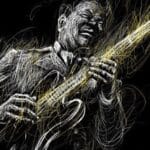Neurological disorders encompass a wide array of conditions affecting the nervous system, including the brain, spinal cord, and nerves. These conditions can significantly impair a person’s movement, sensation, and cognitive abilities, thereby diminishing their quality of life.
While some neurological disorders, such as Alzheimer’s and Parkinson’s disease, are relatively well-known, many rare and horrifying conditions remain obscure. These little-known disorders can be both fascinating and devastating. Let’s explore some of the most unusual and frightening neurological disorders that exist.
Alice in Wonderland Syndrome (AIWS)
Alice in Wonderland Syndrome (AIWS), or Todd’s Syndrome, gets its name from Lewis Carroll’s book, Alice’s Adventures in Wonderland, where Alice experiences strange changes in size. AIWS causes perceptual distortions, altering the perception of body image, size, shape, and color of objects.
Individuals with AIWS may experience micropsia, where objects appear smaller than they are, or macropsia, where objects seem larger. They may also perceive sounds as louder or quieter than they are and experience distortions in time perception. The exact cause of AIWS remains unknown but is linked to migraines, epilepsy, infections like mononucleosis, and hallucinogenic drugs. It affects people of all ages, particularly children. Research suggests that up to 30% of teenagers may have brief AIWS episodes.
AIWS is often temporary, with many underlying causes being short-lived. Between 1955 and 2016, fewer than 200 cases required medical attention, highlighting its rarity.
Cotard’s Syndrome
Cotard’s syndrome is a rare mental illness characterized by the delusional belief that one is dead, doesn’t exist, or has lost internal organs or blood. Named after Jules Cotard, who described it in the 1880s, it presents with varied symptoms including depression, anxiety, self-neglect, delusions, and hallucinations.
Some individuals with Cotard’s syndrome may deny the existence of God or the devil. In severe cases, they may refuse to eat or drink, believing they don’t need sustenance since they are already dead. The causes are not fully understood but may involve biological, psychological, and environmental factors, such as brain damage, bipolar disorder, schizophrenia, and drug abuse.
Treatment varies depending on the underlying cause and may include antipsychotic medications, antidepressants, psychotherapy, and electroconvulsive therapy.
Foreign Accent Syndrome
Foreign Accent Syndrome (FAS) is a rare speech disorder that causes a person’s speech to sound like they have a foreign accent. This condition can arise from frightening, life-altering events such as stroke, brain injury, or neurological conditions like multiple sclerosis. Beyond the accent, symptoms include difficulty speaking and pronouncing words, changes in intonation and rhythm, and difficulty with word choice and grammar.
Since its first report in the 1940s, only about 100 cases of FAS have been documented. One famous case involved a Norwegian woman who developed a German accent after being hit by shrapnel during World War II. Other cases include a woman from Devon, UK, who acquired a Chinese accent after a migraine, and a British woman who began speaking with a French accent after a stroke.
Alien Hand Syndrome
Alien Hand Syndrome (AHS), also known as anarchic hand or Dr. Strangelove syndrome, is a rare neurological disorder affecting limb movement control. Individuals with AHS experience involuntary movements of one hand, as if it has a mind of its own. Symptoms vary, but often the affected hand performs actions opposite to the person’s intentions.
For example, the hand might touch something the person wishes to avoid, undo buttons or zippers, or even hit the person’s face. In some instances, the hand might grab objects and hold them tightly. AHS results from brain damage, often from surgery or injury, disrupting communication between brain regions that control limb movements. It can also be associated with other neurological disorders like epilepsy or dementia.
In one disturbing case, a 77-year-old woman reported her left hand moving on its own while she watched TV, stroking her face and hair uncontrollably for almost 30 minutes.
Mirror-Touch Synesthesia
Mirror-Touch Synesthesia (MTS) is a fascinating neurological condition where individuals experience the same sensation as another person, even without physical contact. It is a type of synesthesia, where stimulating one sense triggers another.
Those with MTS feel a physical sensation, such as tickling or tingling, when they see someone else being touched. The intensity and duration vary. Research suggests individuals with MTS may exhibit enhanced empathy, leading to more selfless behavior. A 2018 study indicated that MTS can enhance emotional reactivity and improve the capacity to recognize emotions.
Prosopagnosia
Prosopagnosia, commonly known as face blindness, is a neurological disorder that impairs the ability to recognize faces. It can result from brain damage or be present from birth. Damage to the fusiform gyrus, responsible for facial recognition, is the most common cause. Some people are born with the condition, likely due to a genetic mutation.
Individuals with prosopagnosia can see facial features but cannot connect them to a specific person. They struggle to remember faces, even of people they’ve known for a long time, and may also have difficulty recognizing other objects like cars or buildings. Studies suggest that up to 2.5% of individuals have congenital prosopagnosia to some degree.
Fibrodysplasia Ossificans Progressiva
Fibrodysplasia Ossificans Progressiva (FOP), or “stone man syndrome,” is a rare genetic disorder affecting approximately 1 in two million people worldwide. It involves the progressive formation of bone in muscles, tendons, and ligaments, leading to restricted movement and eventual immobility.
FOP is caused by a mutation in the ACVR1 gene, which leads to overactive protein production involved in bone development in soft tissues. There is no cure, and treatment options are limited. Misdiagnosis rates are high, with approximately 90% of cases initially misdiagnosed. A staggering 67% of patients undergo invasive diagnostic procedures that may cause more harm than good.
Kleine-Levin Syndrome
Kleine-Levin Syndrome (KLS), also known as Sleeping Beauty Syndrome, is a rare neurological disorder affecting about one to two cases per million, primarily adolescents and young adults. Symptoms include recurrent episodes of excessive sleep, altered behavior, and cognitive disturbances.
During episodes, individuals may sleep up to 20 hours a day, with a decreased need for food and water. Other symptoms include impulsivity, irritability, hypersexuality, confusion, disorientation, and memory loss. KLS episodes typically last from a week to a couple of months, with symptom-free periods in between. The causes are unknown, and there is no cure. Episodes may occur every few weeks or months and can last for ten years or more before resolving on their own.
Approximately 50% of patients exhibit symptoms consistent with hypersexuality during episodes, more commonly in men. These symptoms include increased masturbation, exposing oneself, using obscene language, fondling genitalia, and making unwanted sexual advances.
Witzelsucht
Witzelsucht is a condition characterized by pathological joking, where individuals excessively tell pointless or inappropriate jokes. The term comes from the German words for joke (“witz”) and addiction (“sucht”). A 2016 study documented two cases, including a 69-year-old man who began compulsively making jokes after a brain bleed.
He also exhibited fixations and borderline offensive comments. Another patient, a 57-year-old man, developed a habit of telling childish jokes and laughing uncontrollably at his own comments. The pathological humor was associated with damage to the bifrontal regions of their brains. Ironically, patients found their own jokes hilarious but didn’t find other people’s jokes amusing.
Jerusalem Syndrome
Jerusalem syndrome involves religiously themed obsessive ideas, delusions, or other experiences resembling psychosis, triggered by a visit to Jerusalem. It affects individuals from various religious backgrounds, including Jews, Christians, and Muslims.
Reported cases increased leading up to the millennium but have since decreased. One incident involved a man from the Midwest found wandering in a white robe, claiming to be the Apostle Paul. Another case involved a man who believed he was John the Baptist, found naked in the desert attempting to baptize people. Most patients are deeply religious Christian pilgrims, often Protestants from rural areas, making their first trip abroad with an idealized image of Jerusalem. They experience a short-term mental breakdown when reality doesn’t match their expectations.
These neurological disorders, while rare, offer a glimpse into the complex and sometimes bizarre workings of the human brain. Understanding these conditions can provide insights into brain function and the challenges faced by those who live with these disorders.
Which of these conditions did you find most surprising? Leave your comment below!










